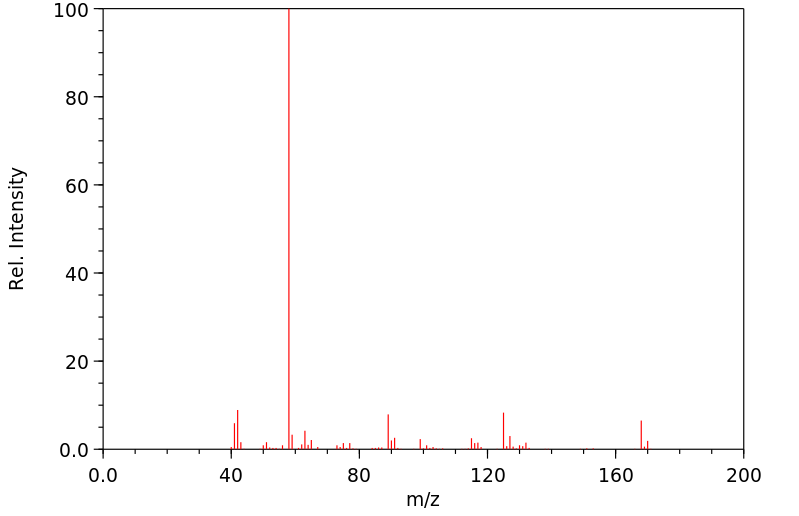毒理性
识别:氯特米特盐酸是一种作用于中枢的抗肥胖药物。它是一种安非他明衍生物,被滥用以增强性能和缓解疲劳。其滥用方式为口服或注射。人类暴露:主要风险和靶器官:急性中枢神经系统刺激,心脏毒性导致心动过速、心律失常、高血压和心血管崩溃。依赖和滥用的高风险。临床效果总结:心血管:心悸、胸痛、心动过速、心律失常和高血压常见;在严重中毒中可能会发生心血管崩溃。已描述心肌缺血、梗死和心室功能障碍。中枢神经系统(CNS):CNS刺激,震颤、不安、激动、失眠、活动增多、头痛、惊厥、昏迷和高反射。已观察到卒中和脑血管炎。胃肠道:可能发生呕吐、腹泻和痉挛。泌尿生殖系统:膀胱括约肌张力增加可能导致排尿困难、犹豫和急性尿潴留。由于脱水或横纹肌溶解症,可能会发生肾衰竭。可能出现肾缺血。皮肤科:皮肤通常苍白和多汗,但粘膜看起来干燥。内分泌:可能会注意到短暂的甲状腺毒症。代谢:代谢和肌肉活动增加可能导致过度换气和高热。慢性使用时体重减轻常见。液体/电解质:已报告低钾和高钾血症。脱水常见。肌肉骨骼:可能出现肌束震颤和强直。横纹肌溶解症是严重中毒的重要后果。精神科:激动、混乱、情绪升高、清醒增加、健谈、易怒和恐慌发作是典型的。慢性滥用可导致妄想和偏执。在长期使用后突然停药会发生戒断综合征。禁忌症:厌食、失眠、病态人格障碍、自杀倾向、抽动症和其他疾病、甲亢、闭角型青光眼、糖尿病和心血管疾病如心绞痛、高血压和心律失常。与多种其他中枢神经系统兴奋药物相互作用。暴露途径:口服:容易从胃肠道和颊粘膜吸收。它对单胺氧化酶的代谢具有抗性。吸入:通过吸入迅速吸收,并且通过这种方式被滥用。 parenteral:在滥用情况下常见的进入途径。暴露途径的吸收:口服摄入后迅速吸收。血浆水平高峰在1到3小时内出现,随身体活动程度和胃内食物量而变化。通常在4到6小时内吸收完全。有作为树脂结合而非可溶性盐的缓释制剂。与标准制剂相比,这些化合物显示出较低的血浆水平高峰,但吸收的总量和达到高峰水平的时间相似。暴露途径的分布:集中在肾脏、肺、脑脊液和大脑中。高度脂溶性,容易穿过血脑屏障。蛋白结合和分布体积差异很大,但平均分布体积为5 L/kg体重。暴露途径的生物半衰期:在正常条件下,大约30%在尿液中以原形排出,但这一排泄量变化很大,且取决于尿液的pH值。当尿液pH值为酸性(pH 5.5至6.0)时,消除主要通过尿液排泄,大约60%的剂量在48小时内以原形由肾脏排出。当尿液pH值为碱性(pH 7.5至8.0)时,消除主要通过脱氨(不到7%以原形在尿液中排出);半衰期从16小时到31小时不等。代谢:主要的代谢途径涉及细胞色素P450对对-羟基化合物及其同类物苯丙酮的脱氨;后者随后被氧化成氯苯甲酸,并以葡糖醛酸苷或甘氨酸(马尿酸)结合物形式排出。少量通过氧化转化为氯诺非得林。羟基化产生一个活性代谢物,O-羟基诺非得林,它作为一种假神经递质,可能对一些药物效果负责,特别是在慢性使用者中。消除和排泄:通常24小时内以治疗剂量5%到30%以原形在尿液中排出,但实际上尿液中排泄和代谢的量高度依赖于pH值。作用方式:毒动力学:似乎主要通过在神经末梢的储存位点释放生物胺,尤其是去甲肾上腺素和多巴胺,在大脑中发挥大部分或全部作用。它还可能通过抑制单胺氧化酶来减慢儿茶酚胺的代谢。致畸性:将该化合物用于医疗指征不会对胎儿产生显著的先天性异常风险。新生儿可能会观察到轻微的戒断症状,但对婴儿随访的少数研究并未显示出长期后果,尽管需要更多此类研究。非法的母体使用或滥用对胎儿和新生儿构成重大风险,包括宫内生长迟缓、早产和增加母亲、胎儿和新生儿发病率的潜力。这些不良结果可能源于多因素,涉及多种药物使用、生活方式和母亲健康状况差。然而,在子宫内暴露的新生儿发生的大脑损伤似乎直接与该化合物的血管收缩性质相关。在整个孕期暴露的儿童倾向于更具攻击性。相互作用:乙酰唑胺:给药可能增加血清浓度。酒精:可能增加血清浓度。抗
IDENTIFICATION: Clortermine hydrochloride is a centrally acting antiobesity drug. It is an amphetamine derivative and misused for performance enhancement and relief of fatigue. Its abuse is either orally or by injection. HUMAN EXPOSURE: Main risks and target organs: Acute central nervous system stimulation, cardiotoxicity causing tachycardia, arrhythmias, hypertension and cardiovascular collapse. High risk of dependency and abuse. Summary of clinical effects: Cardiovascular: Palpitation, chest pain, tachycardia, arrhythmias and hypertension are common; cardiovascular collapse can occur in severe poisoning. Myocardial ischaemia, infarction and ventricular dysfunction are described. Central Nervous System (CNS): Stimulation of CNS, tremor, restlessness, agitation, insomnia, increased motor activity, headache, convulsions, coma and hyperreflexia are described. Stroke and cerebral vasculitis have been observed. Gastrointestinal: Vomiting, diarrhea and cramps may occur. Genitourinary: Increased bladder sphincter tone may cause dysuria, hesitancy and acute urinary retention. Renal failure can occur secondary to dehydration or rhabdomyolysis. Renal ischemia may be noted. Dermatologic: Skin is usually pale and diaphoretic, but mucous membranes appear dry. Endocrine: Transient hyperthyroxinemia may be noted. Metabolism: Increased metabolic and muscular activity may result in hyperventilation and hyperthermia. Weight loss is common with chronic use. Fluid/Electrolyte: Hypo- and hyperkalemia have been reported. Dehydration is common. Musculoskeletal: Fasciculations and rigidity may be noted. Rhabdomyolysis is an important consequence of severe poisoning. Psychiatric: Agitation, confusion, mood elevation, increased wakefulness, talkativeness, irritability and panic attacks are typical. Chronic abuse can cause delusions and paranoia. A withdrawal syndrome occurs after abrupt cessation following chronic use. Contraindications: Anorexia, insomnia, psychopathic personality disorders, suicidal tendencies, Tourette syndrome and other disorders, hyperthyroidism, narrow angle glaucoma, diabetes mellitis and cardiovascular diseases such as angina, hypertension and arrythmias.Interacts with several other CNS stimulant drugs. Routes of exposure: Oral: Readily absorbed from the gastro-intestinal tract and buccal mucosa. It is resistant to metabolism by monoamine oxidase. Inhalation: Rapidly absorbed by inhalation and is abused by this route. Parenteral: Frequent route of entry in abuse situations. Absorption by route of exposure: Rapidly absorbed after oral ingestion. Peak plasma levels occur within 1 to 3 hours, varying with the degree of physical activity and the amount of food in the stomach. Absorption is usually complete by 4 to 6 hours. Sustained release preparations are available as resin bound, rather than soluble, salts. These compounds display reduced peak blood levels compared with standard preparations, but total amount absorbed and time to peak levels remain similar. Distribution by route of exposure: Concentrated in the kidney, lungs, cerebrospinal fluid and brain. Highly lipid soluble and readily cross the blood-brain barrier. Protein binding and volume of distribution varies widely, but the average volume of distribution is 5 L/kg body weight. Biological half-life by route of exposure: Under normal conditions, about 30% is excreted unchanged in the urine but this excretion is highly variable and is dependent on urinary pH. When the urinary pH is acidic (pH 5.5 to 6.0), elimination is predominantly by urinary excretion with approximately 60% of a dose being excreted unchanged by the kidney within 48 hours. When the urinary pH is alkaline (pH 7.5 to 8.0), elimination is predominantly by deamination (less than 7% excreted unchanged in the urine); the half-life ranging from 16 to 31 hours. Metabolism: The major metabolic pathway involves deamination by cytochrome P450 to the para-hydroxy compound and its congener phenylacetone; this latter compound is subsequently oxidized to chloro benzoic acid and excreted as glucuronide or glycine (hippuric acid) conjugate. Smaller amounts are converted to chloronorephedrine by oxidation. Hydroxylation produces an active metabolite, O-hyroxynorephedrine, which acts as a false neurotransmitter and may account for some drug effect, especially in chronic users. Elimination and excretion: Normally 5 to 30% of a therapeutic dose is excreted unchanged in the urine by 24 hours, but the actual amount of urinary excretion and metabolism is highly pH dependent. Mode of action: Toxicodynamics: Appears to exert most or all of its effect in the CNS by causing release of biogenic amines, especialy norepinephrine and dopamine, from storage sites in nerve terminals. It may also slow down catecholamine metabolism by inhibiting monoamine oxidase. Teratogenicity: Use of the compound for medical indications does not pose a significant risk to the fetus for congenital anomalies. Mild withdrawal symptoms may be observed in the newborn, but the few studies of infant follow-up have not shown long-term sequele, although more studies of this nature are needed. Illicit maternal use or abuse presents a significant risk to the fetus and newborn, including intrauterine growth retardation, premature delivery and the potential for increased maternal, fetal and neonatal morbidity. These poor outcomes are probably multifactorial in origin, involving multiple drug use, life-styles and poor maternal health. However, cerebral injuries occurring in newborns exposed in utero appear to be directly related to the vasoconstrictive properties of the compound. Those children exposed throughout pregnancy tended to be more aggressive. Interactions: Acetazolamide: administration may increase serum concentration. Alcohol: may increase serum concentration. Ascorbic acid: lowering urinary pH, may enhance excretion. Furazolidone: May induce a hypertensive response in patients taking furazolidone. Guanethidine: Inhibits the antihypertensive response to guanethidine. Haloperidol: limited evidence indicates that haloperidol may inhibit the effects but the clinical importance of this interaction is not established. Lithium carbonate: isolated case reports indicate that lithium may inhibit the effects. Monoamine oxidase inhibitor: severe hypertensive reactions have followed the administration to patients taking monoamine oxidase inhibitors. Norepinephrine: Abuse may enhance the pressor response to norepinephrine. Phenothiazines: May inhibit the antipsychotic effect of phenothiazines, and phenothiazines may inhibit the anorectic effect. Sodium bicarbonate: large doses of sodium bicarbonate inhibit its elimination, thus increasing the effect. Tricyclic antidepressants: theoretically increases the effect, but clinical evidence is lacking. /Clortermine hydrochloride/
来源:Hazardous Substances Data Bank (HSDB)







